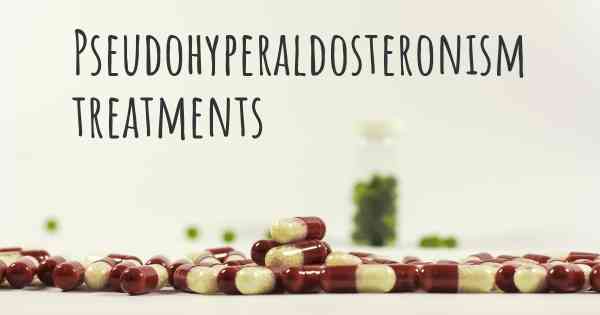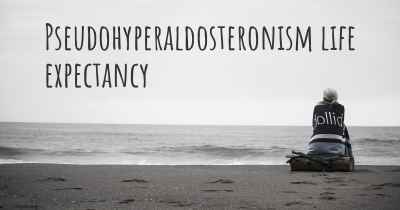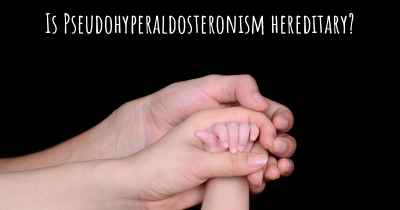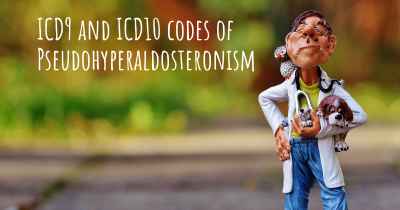What are the best treatments for Pseudohyperaldosteronism?
See the best treatments for Pseudohyperaldosteronism here

Treatments for Pseudohyperaldosteronism
Pseudohyperaldosteronism, also known as apparent mineralocorticoid excess (AME), is a rare genetic disorder that affects the body's ability to regulate sodium and potassium levels. This condition leads to symptoms similar to those seen in primary hyperaldosteronism, such as high blood pressure and low potassium levels. However, the underlying cause is different, and therefore, the treatment approach also varies.
1. Glucocorticoid Therapy: The primary treatment for pseudohyperaldosteronism is the administration of glucocorticoids, such as prednisone or dexamethasone. These medications work by suppressing the overactive mineralocorticoid receptors, which are responsible for the abnormal sodium and potassium regulation. Glucocorticoid therapy helps to restore the balance of electrolytes and reduce the symptoms associated with pseudohyperaldosteronism.
2. Sodium Restriction: In addition to medication, it is important for individuals with pseudohyperaldosteronism to follow a low-sodium diet. Limiting sodium intake helps to prevent fluid retention and further imbalance of electrolytes. A dietitian can provide guidance on appropriate sodium restrictions and help develop a balanced meal plan.
3. Potassium Supplementation: Since pseudohyperaldosteronism can cause low potassium levels, supplementation may be necessary. Potassium supplements can help maintain normal potassium levels and prevent complications associated with hypokalemia. However, it is crucial to consult a healthcare professional before starting any potassium supplements, as excessive potassium intake can also be harmful.
4. Monitoring Blood Pressure and Electrolytes: Regular monitoring of blood pressure and electrolyte levels is essential for individuals with pseudohyperaldosteronism. This helps to assess the effectiveness of treatment and make any necessary adjustments. Blood pressure should be checked regularly, and blood tests can measure sodium, potassium, and other electrolyte levels.
5. Genetic Counseling: Pseudohyperaldosteronism is a genetic disorder, and therefore, genetic counseling may be beneficial for affected individuals and their families. Genetic counselors can provide information about the inheritance pattern, recurrence risks, and available testing options for family members.
6. Management of Complications: Pseudohyperaldosteronism can lead to complications such as hypertension, electrolyte imbalances, and kidney problems. Managing these complications is an important part of the overall treatment plan. This may involve additional medications, lifestyle modifications, and close monitoring of organ function.
7. Supportive Care: Living with a chronic condition like pseudohyperaldosteronism can be challenging. It is important for individuals to have a strong support system, including healthcare professionals, family, and friends. Supportive care may involve psychological counseling, education about the condition, and resources for coping with the physical and emotional aspects of the disease.
In conclusion, the treatment of pseudohyperaldosteronism involves a combination of glucocorticoid therapy, sodium restriction, potassium supplementation, regular monitoring, genetic counseling, management of complications, and supportive care. It is crucial for individuals with this condition to work closely with healthcare professionals to develop an individualized treatment plan that addresses their specific needs and minimizes the impact of pseudohyperaldosteronism on their overall health and well-being.








